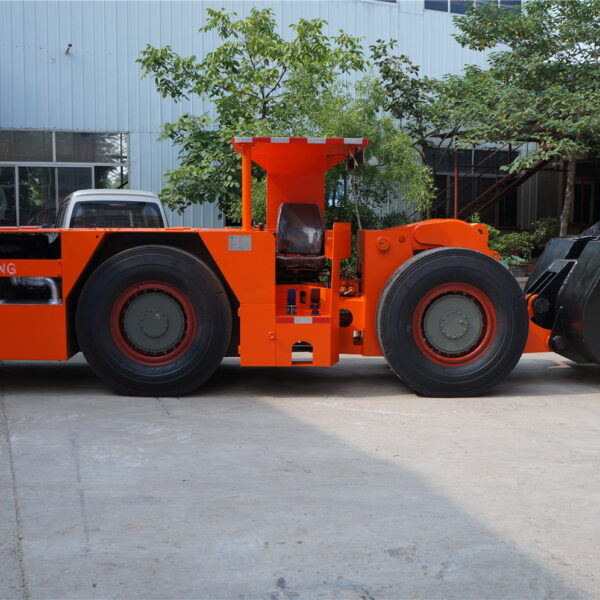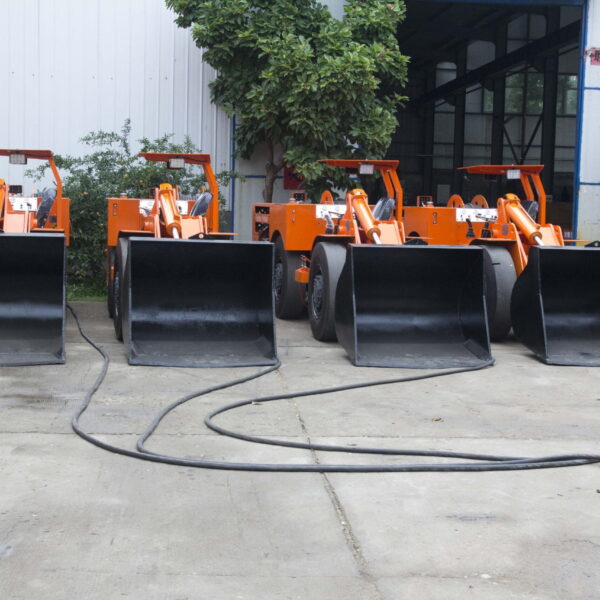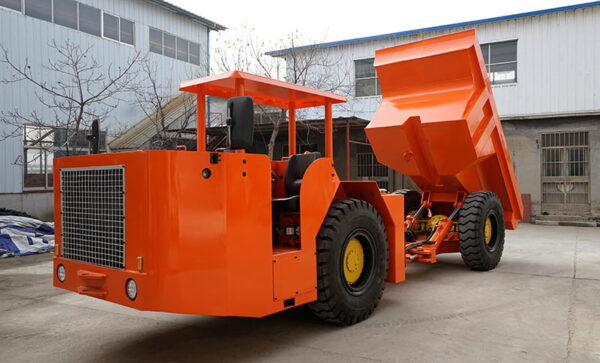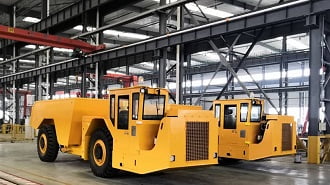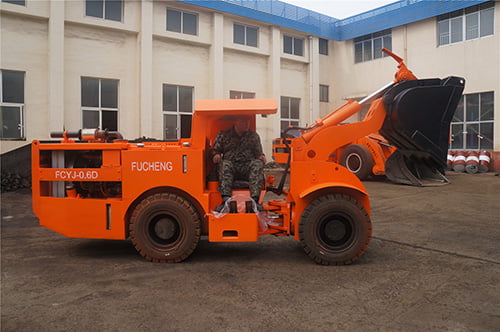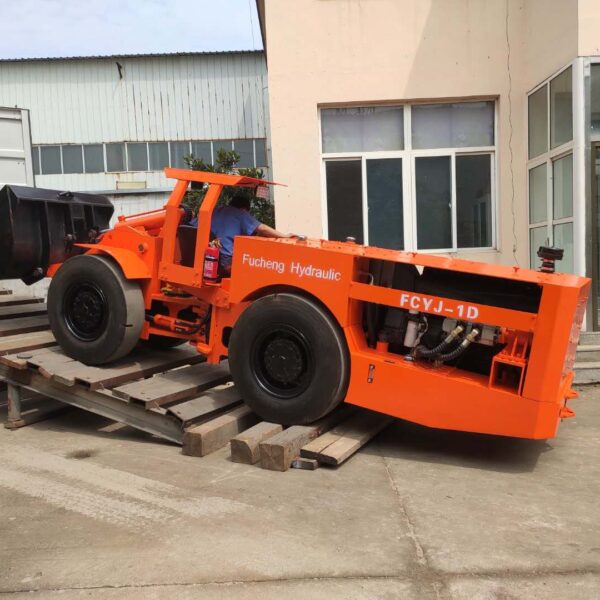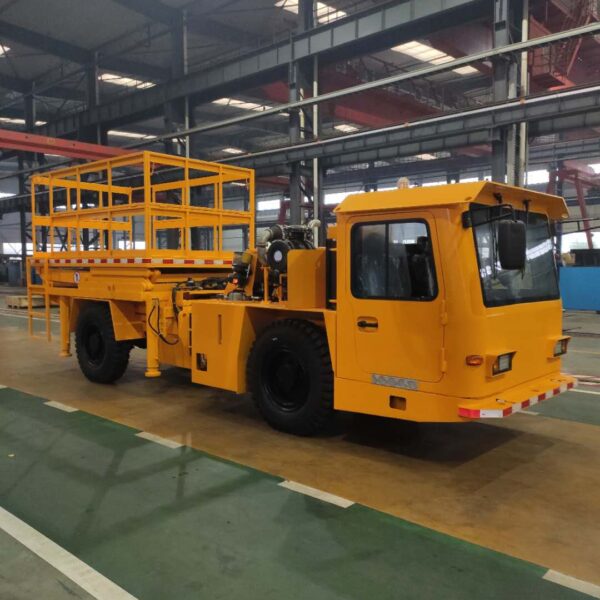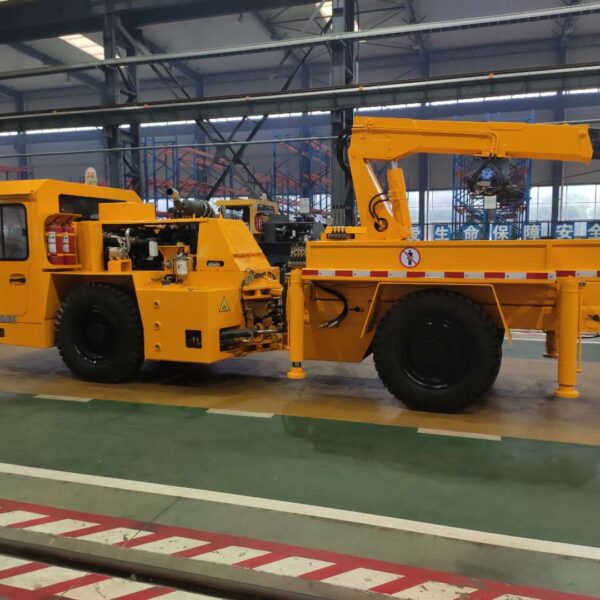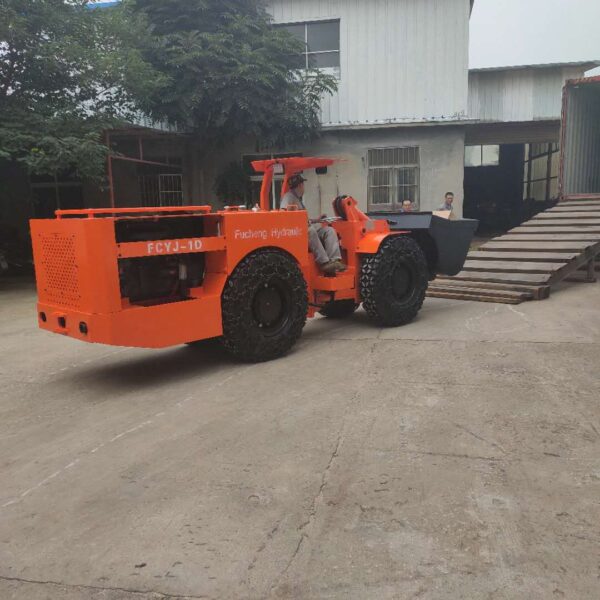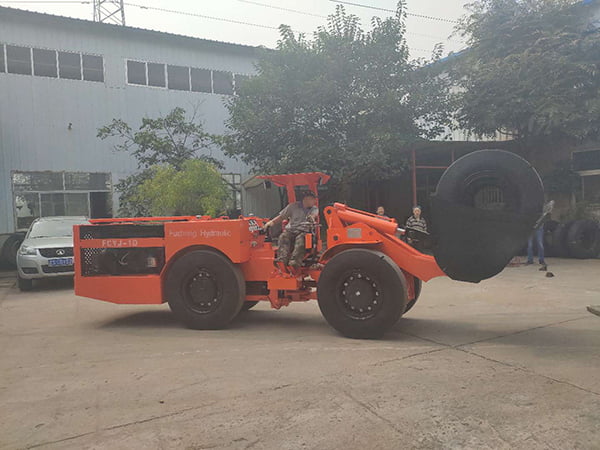Introdução
A máquina LHD é uma máquina de despejo de carga e transporte. É usada principalmente em minas subterrâneas e projetos de túneis. Os pneus da escavadeira LHD adotam uma engenharia de corte durável, lisa ou semibrilhante. E a máquina de despejo de carga tem um dispositivo de purificação do escapamento do motor diesel.
Classificação da máquina LHD
De acordo com a fonte de energia
De acordo com a fonte de energia, ela pode ser dividida em scrapers de combustão interna acionados por motores a diesel e scrapers elétricos acionados por motores elétricos. Veja a seguir as vantagens e desvantagens das duas máquinas LHD:
Máquina LHD de combustão interna
Máquina LHD elétrica
De acordo com a capacidade da caçamba
Máquina LHD pequena: Escavadeira LHD com capacidade de caçamba de 1,5 m³ ou menos.
Máquina LHD média: Escavadeira LHD com capacidade de caçamba de 2 a 4 m³.
Máquina LHD grande: Escavadeira LHD com capacidade de caçamba de 4m³ ou mais.
Dispositivo de trabalho da máquina LHD
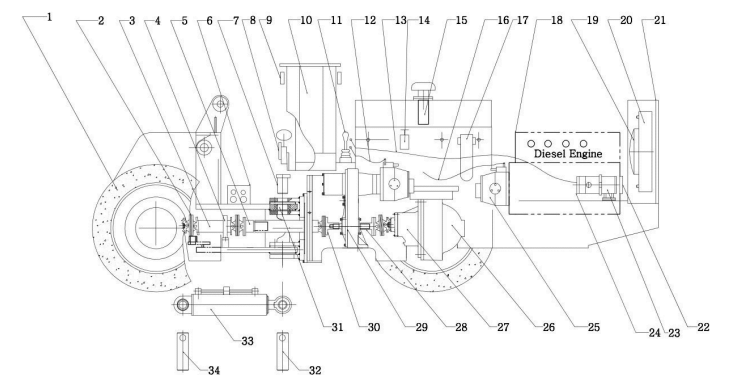
Esboço do dispositivo de trabalho do raspador
1-pneu 2-eixo de acionamento1 3-eixo de acionamento2 4-mancal da ponte 5-eixo de acionamento3 6-válvula de controle multidirecional
7-eixo do pino central 8-divertedor 9-luz dianteira e traseira 10-cabine do motorista 11-válvula do piloto 12-eixo macio do motor
13-eixo macio do motor 14-válvula de sobrefluxo 15-filtro 16-eixo macio para deslocamento 17-montagem do filtro
18-Motor diesel 19-Ventilador DC 20-Armação caudal traseira 21-Armação caudal traseira 22-Rodas de correia 23-Sede da bomba
24-bomba principal 25-bomba de deslocamento 26-eixo motriz 27-diferencial principal 28-garfo do eixo1 29-caixa de transferência
30-garfo do eixo2 31-rolamento articulado 32-pino de direção traseiro 33-cilindro de direção 34-pino de direção dianteiro
O princípio de funcionamento e o processo da máquina LHD
A máquina LHD subterrânea pode carregar, transportar e descarregar. É um equipamento autopropelido. O processo de trabalho da máquina LHD na mineração pode ser refletido no dispositivo de trabalho. O comprimento do cilindro de elevação e do cilindro da caçamba rotativa determina as várias condições de trabalho do dispositivo de trabalho. Seu processo de trabalho consiste em 5 condições de trabalho:
- Condições de inserção:
A lança é abaixada, a caçamba é colocada no solo, a ponta da caçamba toca o solo, a parte inferior da caçamba está em um ângulo de 3° a 50° com o solo, e a caçamba é inserida na pilha pela tração da máquina.
- Condições de carregamento da pá:
Depois que a caçamba for inserida na pilha de material, gire a caçamba para remover o material com a pá até que a boca da caçamba fique aproximadamente nivelada.
- Condições de elevação:
Depois que a caçamba for retraída, use o cilindro de elevação para girar a lança até a posição de descarga adequada.
- Condições de descarga:
Use o cilindro da caçamba para virar a caçamba e descarregá-la no veículo de transporte. Em seguida, abaixe a lança para recolocar a caçamba na posição de transporte.
- Condições de nivelamento automático:
Depois que a caçamba for descarregada na posição de elevação mais alta a 45°, mantenha o comprimento do cilindro da caçamba inalterado. Quando a lança é colocada na posição de escavação, o ângulo traseiro entre a parte inferior da caçamba e o plano do solo é de 300 a 500.
A origem do sistema de transmissão
Requisitos para dirigir o veículo:
- Faixa de velocidade de direção normal: 6 a 10 vezes
- O alcance da tração: 10 a 15 vezes
- Capacidade de reverter
- Pode cortar a energia
- Pode frear rapidamente
- Capaz de corrigir ou mudar de direção
Insuficiência de desempenho da usina de energia:
- A faixa de velocidade não é ampla, a velocidade máxima é cerca de 1,5 a 2,75 vezes maior que a velocidade mínima
- Faixa de torque estreita
- Não pode girar em ambas as direções (reverso)
- Não pode produzir energia em baixa velocidade, ou seja, não pode iniciar com carga
Esquema de transmissão da máquina LHD subterrânea
A máquina dumper de transporte de carga subterrânea geralmente adota um sistema de transmissão mecânica hidráulica. Para a máquina LHD subterrânea: Capacidade da caçamba > 1 m³, usando sistema de transmissão mecânica hidráulica; Capacidade da caçamba <1 m³, usando sistema de transmissão mecânica hidráulica ou sistema de transmissão hidrostática.
Sistema de transmissão hidromecânico
Vantagens: Ele pode fazer uso total da máquina de potência e se adaptar automaticamente às mudanças na resistência externa dentro de uma determinada faixa, além de realizar a regulagem de velocidade sem etapas. Quando a resistência externa aumenta repentinamente, é possível evitar a sobrecarga da máquina de potência e danos às peças da máquina. Operação suave e trabalho confiável. Desvantagens: eficiência de transmissão extremamente baixa, estrutura complexa, altos custos de fabricação e manutenção.
Sistema de transmissão hidrostática
- A solução de alta velocidade utiliza motores hidráulicos de alta velocidade e transmissão mecânica, ou seja, um sistema de transmissão hidráulico-mecânico.
- O esquema de baixa velocidade é acionado por um motor hidráulico de baixa velocidade pela roda, ou seja, um sistema de transmissão totalmente hidráulico.
Principais componentes da máquina LHD
Conversor de torque
A função do conversor de torque
O coeficiente de adequação do torque do motor a diesel é pequeno. Portanto, ele não pode atender aos requisitos de sobrecarga frequente e mudanças frequentes na carga de veículos subterrâneos. Para resolver esse problema, um conversor de torque hidráulico é adicionado atrás do motor a diesel. As vantagens e desvantagens da adição do conversor de torque em comparação com a transmissão mecânica: Vantagens: fazer com que o veículo tenha adaptabilidade automática. Melhorar a vida útil, o desempenho de ultrapassagem e o conforto do veículo. Simplificar a operação do veículo. Desvantagens: alto custo. O conversor de torque em si tem baixa eficiência e altos custos de manutenção e fabricação.
O teste de parâmetro do conversor de torque
- A pressão normal do conversor de torque é de 1,69-1,96Mpa, e o desvio não pode exceder 0,04Mpa.
- A temperatura máxima do óleo não pode exceder 121°C. A temperatura normal do óleo de trabalho é de 82,2℃-93,3℃.
- O método de teste da temperatura mais alta do óleo: coloque a terceira marcha e pise no freio. Quando o carro não está em movimento, a velocidade do motor é controlada em 1500 rpm e a temperatura do óleo do conversor de torque não excede 121°C após 25 minutos de operação.
Caixa de câmbio
O papel da caixa de câmbio
- Altere a relação de transmissão entre a máquina de força e as rodas motrizes principais, alterando assim a tração e a velocidade de condução do veículo.
- Dirija o veículo para trás.
- Quando a caixa de câmbio está em ponto morto, a energia da máquina de força para as rodas motrizes é cortada para que a máquina de força possa ser ligada. Ou, quando a máquina de força está funcionando, o veículo pode ser parado por um longo período de tempo.
- A mudança de velocidade é distorcida.
A classificação das caixas de câmbio
Transmissão por engrenagem planetária
Transmissão de engrenagem de eixo fixo
Eixo de acionamento
A função do eixo de acionamento
- Aumente o torque transmitido pelo motor.
- As rodas motrizes esquerda e direita têm torques diferentes, e as duas rodas têm uma função diferencial.
- Suporta várias forças da superfície da estrada e da estrutura.
A estrutura do eixo de acionamento
- Acionamento principal: grande capacidade de carga e alta eficiência.
- Diferencial: dividido em diferencial comum e diferencial antiderrapante.
- Redutor de roda: A estrutura de redução planetária pode aumentar ainda mais o torque de saída.
- Freio: Freio multidisco hidráulico úmido totalmente fechado. Estável e confiável, adapta-se a ambientes de trabalho adversos.
Eixo de transmissão
- A função do eixo de acionamento: conecta principalmente o eixo não concêntrico ou a transmissão de potência entre duas partes com mudanças de posição.
- O eixo de acionamento também é chamado de transmissão universal. Ele inclui juntas universais, eixos de transmissão e suportes intermediários.
- Junta universal: Há dois tipos de elasticidade e rigidez.
Conclusão
Com a atualização contínua da tecnologia, o setor de mineração não enfatiza mais o problema do desenvolvimento em larga escala das máquinas LHD. Em vez disso, concentrou-se na melhoria do desempenho e da confiabilidade do equipamento. Há muitos fabricantes de máquinas LHD bem conhecidos no mundo. Este artigo apresenta principalmente a estrutura e o princípio de funcionamento da máquina LHD. Você também pode escolher sua máquina LHD favorita para mineração em Fucheng.


